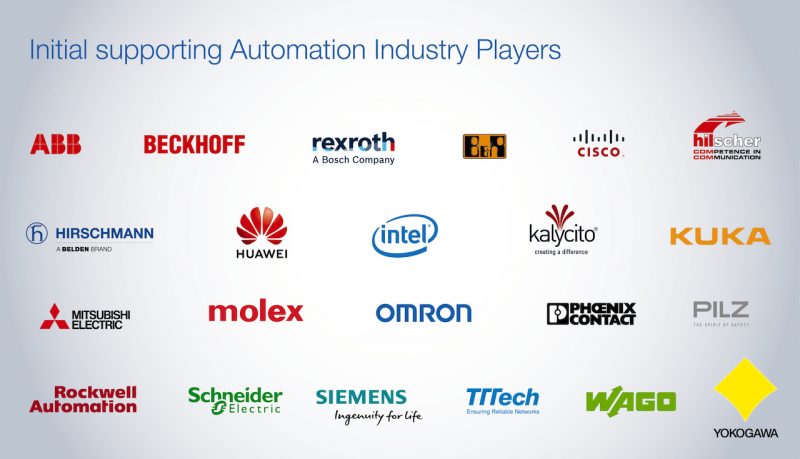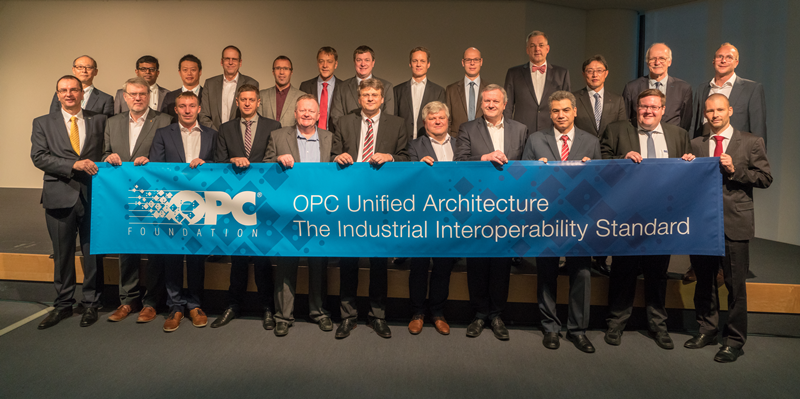The OPC Foundation is pleased to announce the launch of its new task force to identify OPC UA and related TSN-harmonization needs and extend OPC Foundation standards and specifications down to the field level.
The goal of this initiative is to deliver an open, cohesive approach to implement OPC UA including TSN and associated application profiles. This will advance the OPC Foundation’s mission to provide vendor independent end-to-end interoperability down to field level devices for all relevant industrial automation use-cases. The OPC Foundation’s vision of becoming the worldwide industrial interoperability standard is being further advanced by integrating field devices and the shop floor.
A new set of working groups will identify, manage, and standardize OPC UA relevant topics focused on industrial automation including:
- Harmonization and standardization of application profiles e.g. I/O, motion control, safety, and system redundancy
- Standardization of OPC UA information models for field level devices e.g. device description and diagnostics
- Mapping OPC UA application profiles related to real-time operations on Ethernet networks including TSN
- Definition of certification procedures
The working groups will closely align with the TSN Profile for Industrial Automation (TSN-IA-Profile) which will be standardized by the IEC/IEEE 60802 standardization group. This will help ensure that a single, converged TSN network approach is maintained so that OPC UA can share one common multi-vendor TSN network infrastructure together with other applications.
This initiative integrates well with existing joint working groups engaged in ongoing companion specifications e.g. description of machines.
Stefan Hoppe, President of the OPC Foundation said, “The benefit of membership in the OPC Foundation allows companies to actively engage and influence the direction of the OPC Foundation and includes early access to the specifications and technology. This initiative will grow OPC UA into new markets and I highly encourage all OPC Foundation members to contact the OPC Foundation to participate.”
Thomas Burke, Strategic Marketing Officer of the OPC Foundation comments, “We are very excited about the initiative to extend OPC UA including TSN down to the field level, and the number of companies that want to actively participate in this initiative bringing the technology into real world products. This set of working groups will pave the way for the broadest, easiest, and fastest market adoption of OPC UA over TSN.”
The OPC Foundation develops and maintains OPC UA as an open and secure communication platform comprised of an information model framework, communication models, and underlying protocol bindings. As such, the OPC Foundation works non-exclusively with other organizations on various OPC UA related topics but continues to operate as a platform-, technology-, use-case-, and vendor-agnostic standardization body.
Within weeks of announcing the initiative, the rapid engagement of leading automation suppliers proves the resonance of this initiative with the emerging needs of automation users. Committed contribution to the initiative reads like a “Who’s Who” of leading suppliers.

Representatives from ABB, BECKHOFF, Bosch-Rexroth, B&R, Cisco, Hilscher, Hirschmann, Huawei, Intel, Kalycito, KUKA, Mitsubishi Electric, Molex, Omron, Phoenix Contact, Pilz, Rockwell Automation, Schneider Electric, Siemens, TTTech, Wago, and Yokogawa
Significant progress has already been made on the initial set-up with charters created and working groups being incorporated into the OPC Foundation organizational structure. A steering committee has been formed and is open to all members making appropriate resource commitments. This committee will manage the technical and marketing working groups and ensure alignment with OPC Foundation Technical and Marketing Control Boards.
Technical work will begin on January 7, 2019 and the working groups will be open to all members of the OPC Foundation. A call for participation has been send out. Initial work will focus on the core functionality of field device communication, developing a next generation architecture and general model for devices which can be adopted as easily as possible by automation suppliers. This architecture and general model will be expanded with device-type specific functionality by specialist working groups. Extended OPC UA standardization documents will be published including test scenarios and certification procedures to ensure that the wider community can build compliant devices.
Based on time-to-market and existing market gaps, two use cases will be prioritized for specification publication: multi-vendor controller to controller integration and vertical communication from field devices to upper levels. Architectural design will ensure that these specifications can be extended in future releases to cover real-time communications for control, device, motion, and safety functions.
Conformance testing of devices has proven to be a valuable tool ensuring multi-vendor interoperability in end-user deployed systems. The OPC Foundation will deliver conformance test specifications to ensure validated interoperability before delivery to users.